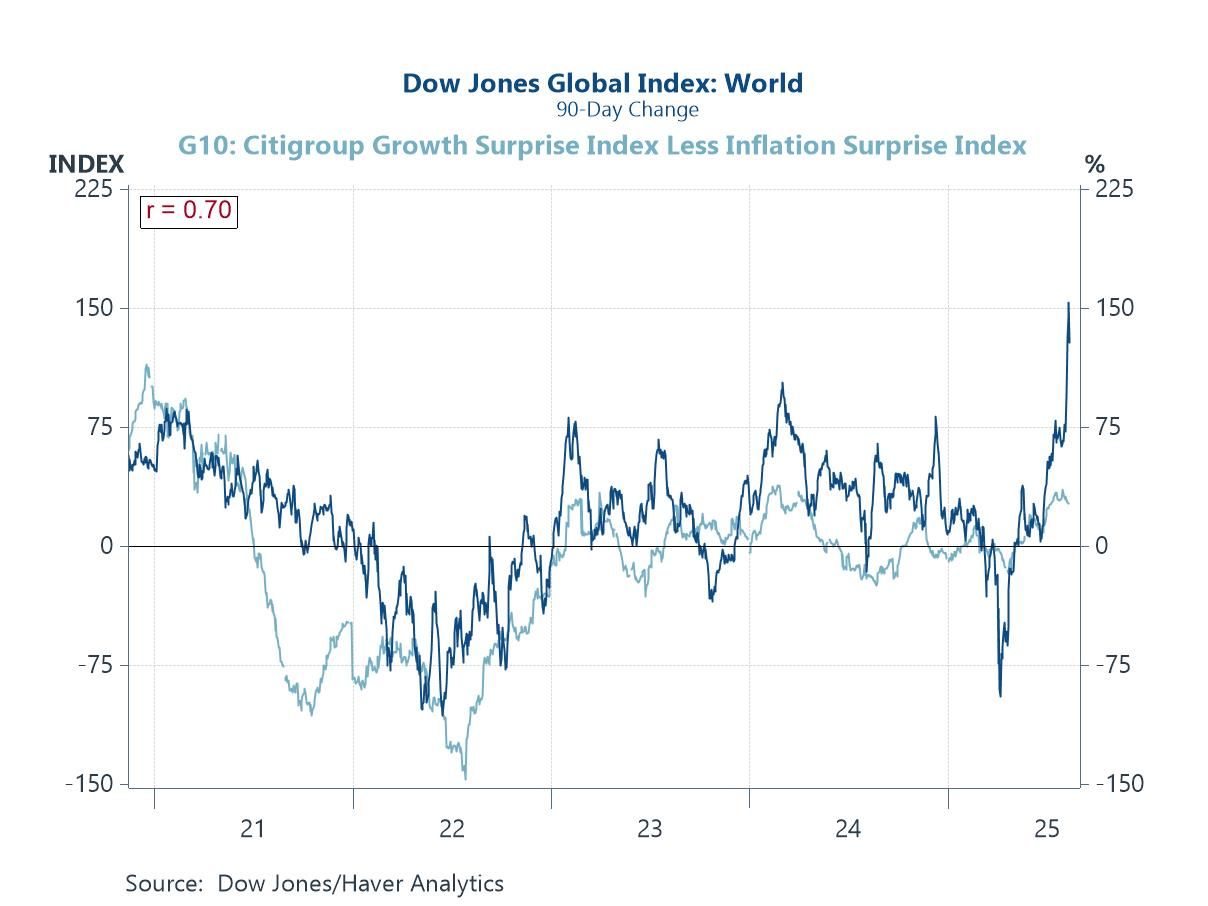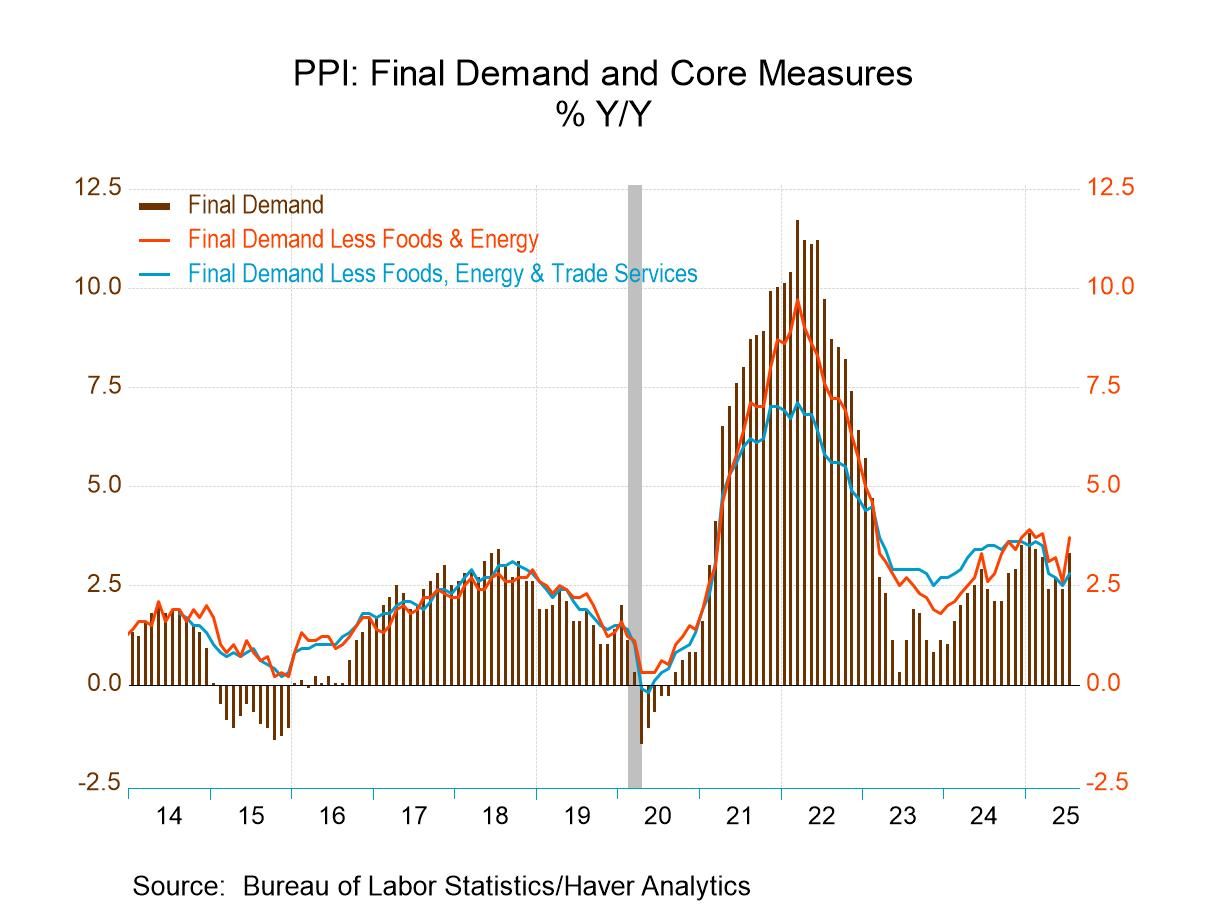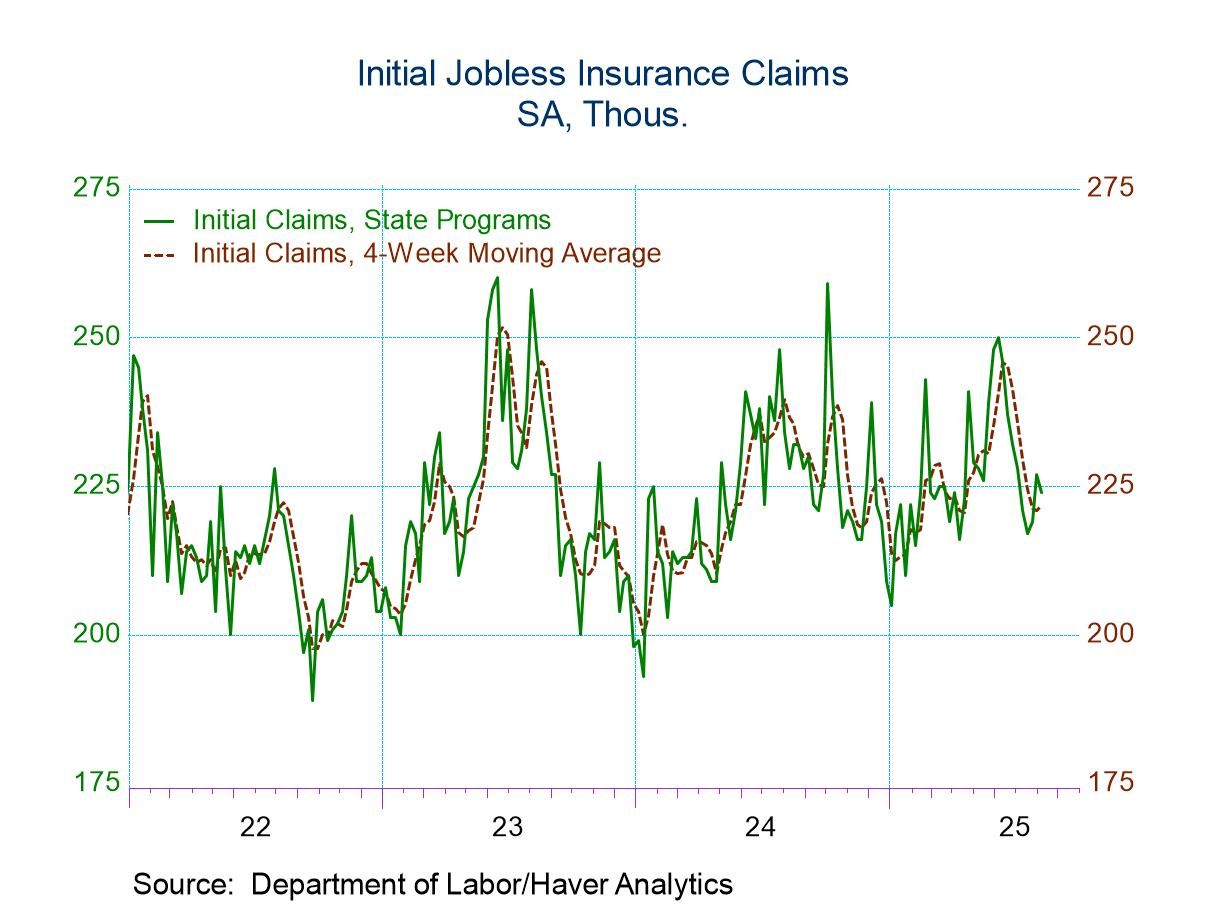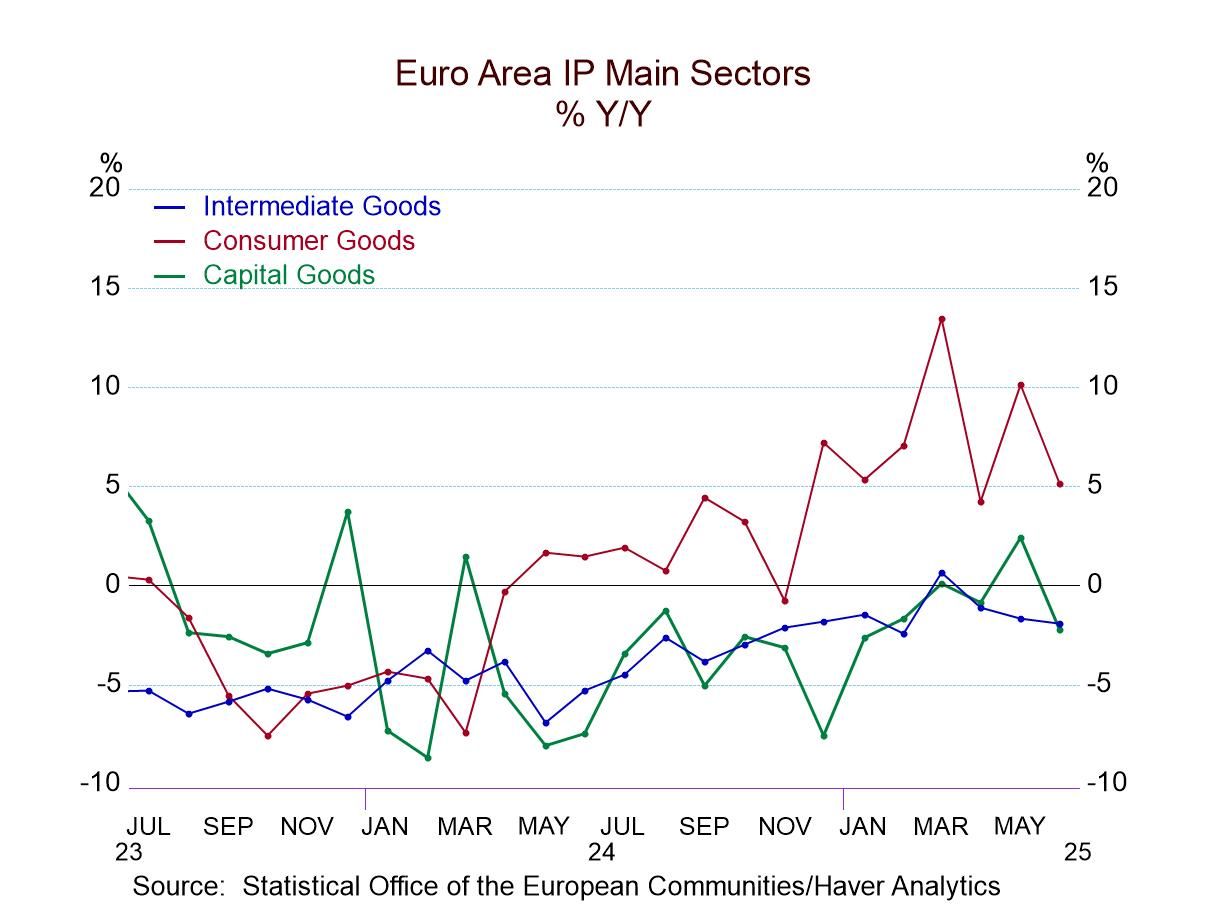 Global| May 06 2011
Global| May 06 2011German IP Growth Is Slight Downturn
Summary
For most German sectors year-over-year growth in industrial output (or IP) has turned only slightly lower. Yet, over three months IP has accelerated overall led by consumer goods, a sector that has been late to the party. Capital [...]
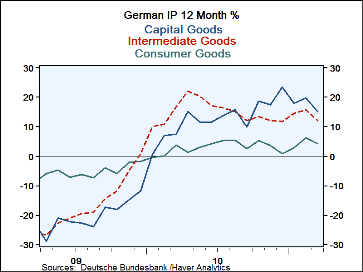 For most German sectors year-over-year growth in industrial output (or IP) has turned only slightly lower. Yet, over three months IP has
accelerated overall led by consumer goods, a sector that has been late to the party. Capital goods, the leading sector thus far in the recovery,
have seen output decline over three months despite increases in output in each of the last two months. Intermediate goods output is exceptionally
strong advancing at an annual rate pace of 33.7% over three-months led mostly by a surge in January and followed by somewhat withering gains in
the next two months.
For most German sectors year-over-year growth in industrial output (or IP) has turned only slightly lower. Yet, over three months IP has
accelerated overall led by consumer goods, a sector that has been late to the party. Capital goods, the leading sector thus far in the recovery,
have seen output decline over three months despite increases in output in each of the last two months. Intermediate goods output is exceptionally
strong advancing at an annual rate pace of 33.7% over three-months led mostly by a surge in January and followed by somewhat withering gains in
the next two months.
Because of these patterns it is difficult to discern how strong German IP may still be. Capital goods seem weaker and we have seen that in sales for capital goods and we know that MFG orders have weakened especially from abroad. But capital goods production is back up in the last two months Even so it has not dug itself out of the hole created by the huge January drop. We are left wondering what is the real condition for German capital goods output? It is weak or recovering? Was January’s drop a fluke?
Germany’s consumer sector appears to be getting in gear late. German consumer goods output is up at a strong 16.8% annual rate pace over three months; it has expanded strongly over the past three months rather consistently. This sector seems to have found its legs.
Intermediate goods output jumped very sharply in January but that surge has faded. The recent month’s rise of 0.3% is meager.
On balance Germany’s output trends are mixed and are somewhat confusing. Coupled with some weakness in orders we should be guarded in our outlook for the future, especially if the euro stays strong or moves higher.
| Total German IP | |||||||
|---|---|---|---|---|---|---|---|
| SAAR Except M/M | Mar-11 | Feb-11 | Jan-11 | 3Mo | 6Mo | 12Mo | Q-2-D |
| IP total | 0.7% | 1.7% | 1.5% | 17.0% | 12.5% | 10.9% | 10.8% |
| Consumer | 0.8% | 1.1% | 2.1% | 16.8% | 5.7% | 4.3% | 8.5% |
| Capital | 0.8% | 2.5% | -5.2% | -7.7% | 15.9% | 15.1% | 0.2% |
| Intermed | 0.3% | 1.3% | 5.8% | 33.7% | 12.7% | 12.1% | 19.9% |
| Memo | |||||||
| Construction | 6.2% | 3.4% | 35.2% | 385.7% | 30.5% | 14.3% | 79.5% |
| MFG IP | 0.5% | 1.8% | 0.3% | 11.0% | 12.4% | 11.9% | 9.2% |
| MFG Orders | -4.0% | 1.9% | 0.0 | 3.7% | 9.0% | 9.8% | 9.6% |
Robert Brusca
AuthorMore in Author Profile »Robert A. Brusca is Chief Economist of Fact and Opinion Economics, a consulting firm he founded in Manhattan. He has been an economist on Wall Street for over 25 years. He has visited central banking and large institutional clients in over 30 countries in his career as an economist. Mr. Brusca was a Divisional Research Chief at the Federal Reserve Bank of NY (Chief of the International Financial markets Division), a Fed Watcher at Irving Trust and Chief Economist at Nikko Securities International. He is widely quoted and appears in various media. Mr. Brusca holds an MA and Ph.D. in economics from Michigan State University and a BA in Economics from the University of Michigan. His research pursues his strong interests in non aligned policy economics as well as international economics. FAO Economics’ research targets investors to assist them in making better investment decisions in stocks, bonds and in a variety of international assets. The company does not manage money and has no conflicts in giving economic advice.



